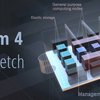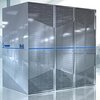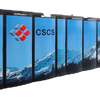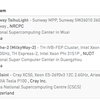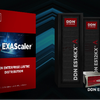For the first time in several years, AMD has brought a server chip to market that provides some real competition to Intel and its near total domination of the datacenter market. The new AMD silicon, known as the EPYC 7000 series processors, come with up to 32 cores, along with a number of features that offer some useful differentiation against its Xeon competition.
The fourth-generation MareNostrum supercomputer is up and running at the Barcelona Supercomputer Centre (BSC), or at last the first phase of it is. When completed, it will contain the most interesting medley of processors of any supercomputer in existence. We asked Sergi Girona, Director of Operations at BSC, to describe the makeup of the new system and explain the rationale for building such a diverse machine.
The whole point of supercomputing is to enable new scientific discovery. The whole point of a conference about supercomputing is to further the conversation about how were going to achieve that.
Cray has launched the Urika-XC, a software suite that brings the capabilities of the Urika-GX big data appliance machine to the XC supercomputer platform. The idea is to offer customers a single system that can host both simulations and advanced data analytics.
On the opening day of the ISC High Performance conference, Atos announced the Bull Sequana X1310, an ARM-based variant of the companys Sequana X1000 supercomputer line.
The recent upgrade to the Piz Daint supercomputer at the Swiss National Supercomputing Centre (CSCS), has thrust the machine into limelight here at the ISC High Performance conference on opening day. The Cray XC50 system turned in a Linpack result of 19.6 petaflops, which was good enough to capture the number three spot on the latest TOP500 list, and displace Titan, the former GPU supercomputing champ, running at Oak Ridge National Laboratory.
Episode 180: Addison Snell and Michael Feldman react to the news from the Top500 list at SC 17.
FRANKFURT, Germany; BERKELEY, Calif.; and KNOXVILLE, Tenn.— The 49th edition of the TOP500 list was released today in conjunction with the opening session of the ISC High Performance conference, which is taking place this week in Frankfurt, Germany. The list ranks the world’s most powerful supercomputers based on the Linpack benchmark and is released twice per year.
After the recent organizational changes at Intel HPDD, the Lustre* community has been wondering what the future of the most utilized parallel file system would look like. The community has been apprehensive about potential disruptive changes that could affect Lustre development as well as potential outcomes for customers who have adopted the technology as their main parallel file system. Although the new Lustre development and adoption strategy still isn’t completely defined, it has turned out to be surprisingly simple, more clear, and consistent than anticipated.
Episode 179: Addison Snell and Michael Feldman comment on the DOE's exascale awards and discuss the things to watch at ISC 17.


